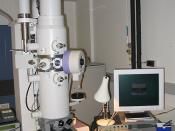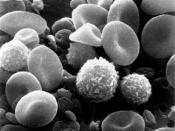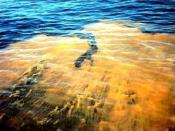Aim: Observing pond water.
Materials: Microscope, slide of pond water, protests/monera handouts.
Procedure:
1. Collect microscope from trolley.
2. Set up microscope and switch on the microscope light.
3. Collect specimen and handouts.
4. Sketch 4-6 different species on medium power setting.
5. Try to estimate size of cells.
Observations: I noticed that there was a lot of activity on the slide. There were many little circle-shaped things that were moving quickly all over the slide. I saw a limnocalanus on the slide, but it was dead. I also saw a tokophrya moving quickly across the field of view, as well as an oscillatoria, which was not moving at all. I saw a cocconeis that was moving steadily along with some fast spurts, and an ichthyophthirius that moved slowly on circles. I also saw a euglena, which flicked out its whip to move around randomly.
Conclusion: The slide was very interesting and had a lot of activity.
I saw a lot of different things, and the handouts allowed me to identify them.
Pond life discussion questions:
1. The high power lens was not used because it would dip into the pond water.
2. I saw one true animal that I knew of in my slide, and that was the limnocalanus.
3. Green protests are called plant-like protists, because they have chloroplasts.
4. Animal-like protest can breathe, and eat.
5. The euglena uses its whip-like "tail" to move. It flicks the tail and that propels it around.
6. The paramecium uses its cilia to move around randomly.
7. The amoeba uses its pseudo pod (false foot) to move around.
8. I do not know if the protists I saw were free living or parasitic.
9. The white blood cells in our body are like an amoeba.
10.
11. Drinking water is...


